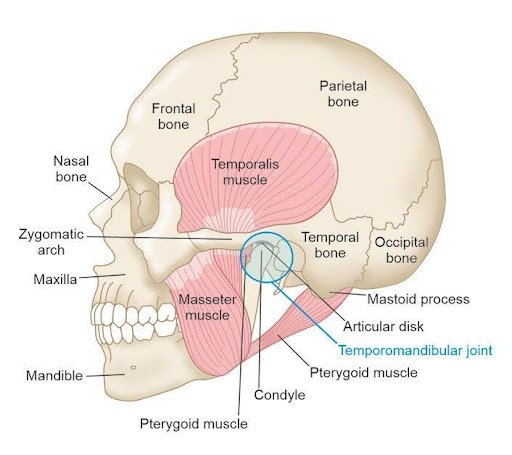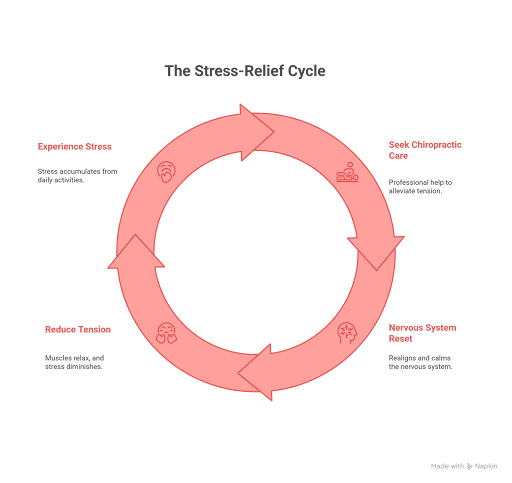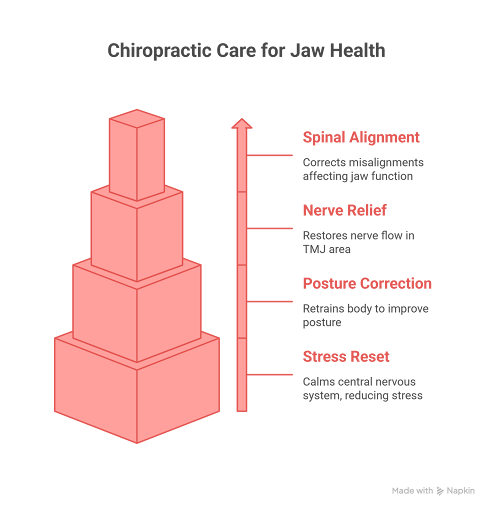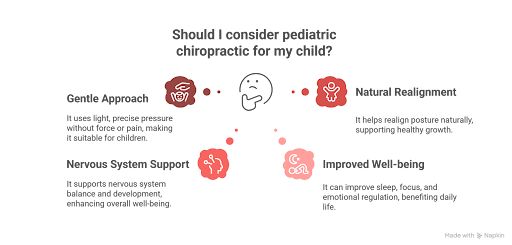It all started during a Zoom meeting.
Sasha, a 27-year-old marketing executive, was mid-pitch when her jaw suddenly popped. It wasn’t loud,but it was weirdly final. That slight click marked the start of a journey she never expected, waking up with headaches, difficulty chewing, and a weird tightness that crept up to her temples and down to her neck.
She Googled it (obviously), expecting “jaw pain after talking too much,” and found three letters that would define her year! TMJ.
TMJ stands for Temporomandibular Joint, which connects your jaw to your skull. It’s the hinge you never think about, until it misfires. TMJ disorders (TMJD) affect 10 million+ Americans, often causing:
And it doesn’t just stay in your jaw, it radiates. TMJ issues can cause a domino effect throughout the body.

Sasha isn’t the only one silently clenching through the chaos. Whether you’re vibing at a cafe, doom scrolling past midnight, or deep into a “just one more episode” spiral, your jaw’s putting in overtime.
Stress doesn’t clock out, it camps out in your face, neck, and spine like it pays rent.
Ring ring now Enter! Chiropractic Care (aka your nervous system’s hype squad)
This isn’t your grandma’s back crack. It’s a full body reset, realigning your vibe, rewiring your stress response, and giving your nervous system the chill pill it’s been begging for.
Jaw alignment, from the ground up
It’s not just your jaw acting out, Misalignments in your neck or spine can throw the whole system into dysfunction. Chiropractors don’t chase symptoms, they go straight to the source.
Nerve relief that actually lasts
The TMJ area is wired with nerves. When your spine’s out of sync, those nerves get loud. Adjustments quiet the noise by restoring proper flow and function.
Posture correction equals jaw liberation
That forward-head, screen-scrolling posture? It stacks pressure on your jaw like bricks. Chiropractic care helps retrain your body to stand tall and move right.
Stress reset, straight from the spine
This isn’t just about physical alignment, it’s about mental realignment too. By calming your central nervous system, chiropractic care flips the switch on chronic stress.


Chiropractic care isn’t a five-minute jaw rub followed by “see ya.” It’s a personalized process, because your body isn’t basic.
What it might include:
The mission? To get your system working with you not against you, TMJ stops running the show.

Nope! Teens facing exam stress, Creatives with screen-time overload, Athletes with bite pressure. TMJ hits across ages, and chiropractic offers a non-invasive option without meds or surgery.
In fact, at Altfammed, we’ve seen everyone from college students to CEOs walk in tight-jawed and walk out relieved.
If your mornings start with a click and your nights end in tension, your body is literally asking for help. TMJ isn’t just about chewing, it’s about how you function and feel.
And chiropractic care isn’t about cracking bones. It’s about cracking open freedom from chronic pain, misalignment, and the daily chaos you didn’t realize you were clenching.
Let’s separate the myths from the medicine. These research-backed insights prove why chiropractic care isn’t just an “alternative”, it’s an informed choice for TMJ relief.
Chiropractic Adjustments Reduce TMJ Pain and Improve Mobility
A 2019 study published in the Journal of Oral Rehabilitation found that patients receiving chiropractic manipulation had a significant reduction in pain and jaw opening limitations compared to those with standard care.
https://pubmed.ncbi.nlm.nih.gov/31281971/
Spinal Alignment Improves Neuromuscular Function
When the spine is misaligned, it disrupts the nervous system, especially cervical nerves linked to the jaw. Chiropractic care restores these pathways, easing muscle tension. https://pubmed.ncbi.nlm.nih.gov/22440554/
TMJ Dysfunction and Poor Sleep Are Closely Linked
A study in Sleep Health Journal linked TMJ disorders with higher instances of insomnia, restless sleep, and fatigue, especially in younger adults. Reducing TMJ tension via chiropractic has helped many regain restful sleep.
https://aes-tmj.org/sites/default/files/content-files/SIC%20Webpage/AES_search_all_items_12.20.2017.pdf
Chiropractic Therapy Lowers Inflammatory Markers
Research shows that spinal adjustments can decrease pro-inflammatory cytokines like IL-6, helping reduce inflammation systemically and in the TMJ region.
https://pmc.ncbi.nlm.nih.gov/articles/PMC3308082/
Multimodal Chiropractic Care Outperforms Single Interventions
Combining spinal adjustments, posture training, and jaw mobilization has been shown to yield better outcomes for TMJ patients than any one method alone.
Time to Unclench? We Thought So.
At Altfammed, we’re not just cracking joints, we’re cracking the code to whole-body healing. TMJ doesn’t have to be your “new normal.” Let’s shift your story from silent suffering to functional freedom.
Book your consultation today, because your jaw (and your life) deserve alignment.
TMJ dysfunction refers to pain and limited movement in the jaw joint and surrounding muscles. It may cause headaches, jaw clicking, facial pain, and difficulty chewing.
Yes! Chiropractors address misalignments in the jaw, neck, and spine, which often contribute to TMJ pain. Many patients report relief after just a few sessions.
Absolutely. Chiropractors use gentle, targeted techniques to relieve tension and improve function. When performed by licensed professionals, it’s considered safe and effective.
Most patients notice improvement within 3–6 sessions, though the number can vary depending on the severity and underlying causes of TMJ dysfunction.
Not necessarily. Many treatments involve soft tissue work, trigger point therapy, and gentle mobilization rather than traditional “cracking.”
Yes! Forward head posture or misalignment in the upper spine can strain the jaw muscles, contributing to or worsening TMJ issues.
Mild soreness is common, but serious side effects are rare. Most people experience relief, better jaw movement, and less tension.
Both can help. Dentists address bite and dental issues, chiropractors target musculoskeletal causes. For best results, a collaborative approach is ideal.
Definitely. Stress often leads to jaw clenching or teeth grinding (bruxism), which strains the TMJ. Chiropractic care helps reduce physical tension and improves relaxation.
It depends on your provider and plan. Some insurance covers chiropractic under musculoskeletal care, so it’s worth checking in advance.

